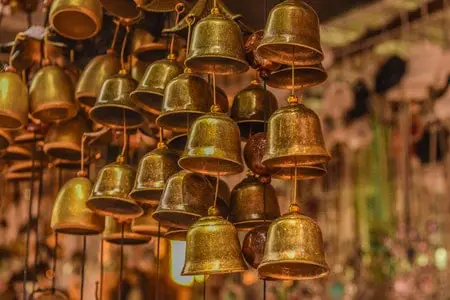Some chemists say that brass is a compound, while others claim it’s an element. The question of what makes brass has been debated for centuries, and even the most knowledgeable experts can’t agree on the answer to this simple question.
Every object that we see around us is either made up of elements, and is a mixture, or a compound. How then do you differentiate between these categories of matter? Most especially, in what category do metals fall into.
According to chemistry, metals could either be a mixture, an element, or a compound. This makes it rather difficult to keep track of their compositions. In fact, brass is often difficult to categorize because most people mistake it for bronze or copper. This confusion is understandable because it is composed of both copper and zinc.
So keep reading to discover why we consider it to be a mixture rather than an element or a compound.
Definition of an Element, Mixture, and Compound
According to chemists, a mixture is the physical combination of two different elements in any proportion. It is generally considered to be an impure substance.
Compounds are the complete opposite of mixtures. They are the chemical combination of various elements in specific proportions. They are also considered to be pure.

An element is a substance that can’t be split into smaller substances. Think of all the elements in the periodic table. Each element varies from another based on its atomic structure. They have varying amounts of electrons, protons, and neutrons.
With this definition, you might be wondering why on earth I’m calling brass a mixture instead of a compound. After all, you have a mixture when you make a pancake batter or make a cocktail. But the truth remains that it belongs to a category of metals called “alloys“.
Alloys are simply metallic mixtures. As long as a mixture contains one metal, it is considered to be an alloy. They were created because most pure metals were too soft to be molded for use.
How Brass is Made in the Lab
Brass is a metal alloy consisting of copper and zinc. It has been used for centuries in plumbing, jewelry, musical instruments, and military purposes. Brass is an essential component of many industries including aerospace, automotive manufacturing, electrical appliances (e.g., water heaters), chemical processing equipment (e.g., chillers), and refrigeration units (e.g., ice makers).
Brass was first made in the lab by chemists who were looking to simulate the process that happens when two metals react with one another. The brass they created was not only beautiful to look at, but also superior to any other metal alloys because it had a lower melting point than either copper or zinc alone.
The manufacturing process of brass includes five steps which are primarily dependent on its desired shape (such as sheets, foils, plates, and strips) and property.
Here’s a brief explanation of the manufacturing process of brass strips and sheets.
Melting: Firstly, a suitable amount of copper and zinc is heated up to form the alloy. The temperature is usually as high as 1050 degrees Celsius in the furnace where the metallic elements are being melted. More components can be added to the mix because some of the zinc evaporates away. This is a very important point to note because according to the definition of a mixture, it consists of different elements that can be mixed in various proportions. This we can see in the case of the brass alloy.

After the mixture has been melted, it is then poured into molds before it is left to cool and solidify. Once they’ve cooled for long enough, they are removed from the molds and ready to be rolled.
Hot Rolling: These slabs are then reheated in the rolling area to a specific temperature to achieve the desired properties and shape of the brass stock. They are now fed through steep rollers to reduce their thickness each time they are rolled. This simultaneously increases its width. Once the flattened brass stock has cooled down for a bit, it is passed through a scalper, a machine that’ll cut off the thin layers that have been created due to the brass’s exposure to air while it was still hot.
Annealing and Cold Rolling: Next, now that the brass has become much cooler, it becomes less ductile. Meaning that it cannot be rolled further. Therefore, to regain its ductility, it has to be reheated. it is this process that is referred to as annealing and it is usually done within a sealed furnace. It is then rolled once more to reduce its thickness. This rolling process is called cold rolling not because there isn’t heat required but because the rolling temperature has been reduced greatly from the initial rolling temperature.
Finish Rolling: The alloy is rolled once more to give off a smooth finish before it is but to its designated size.
Quality Control: Throughout the four steps discussed above, evaluation processes are carried out to ensure that the materials are controlled to form the desired brass stock. Also, the heating temperatures are closely monitored because it affects the end product. Then, after the finish rolling step, it is tested for several factors such as strength, dimensions, and hardness.
What is Brass Used For?
Brass is a metal alloy of copper and zinc. It is typically found in its pure form as the result of an electrochemical process called brass smelting, which produces this material by reducing alloys of copper ore (cassiterite) with zinc ore (sphalerite). Brass has various uses such as for cooking utensils, decorative items, plumbing fixtures or tools.

Its most common uses today are for musical instruments, such as trombones and trumpets, and to make coins. Brass has many desirable qualities including its malleability which means it can be bent into different shapes without breaking.
Is brass a heterogeneous Mixture?
Brass is a metal alloy that is made up of copper and zinc. It can be defined as heterogeneous because it has two different metals that are mixed together to create the brass. Brass does not have a uniform composition, but rather varies throughout the material depending on how much zinc or copper was added during production.
The brass that we see in everyday life can be either a homogeneous mixture or a heterogeneous mixture depending on how the material was produced.
Why is the categorization of brass important? After all, it’s quite inexpensive in comparison to other metals such as gold and silver. The answer is that brass is an economically important alloy that is used in various industries. By definition, a mixture consists of two or more elements that have been physically combined in any proportion.
The manufacturing process of brass is simply the mixture of two molten elements, copper and zinc, in any proportion whatsoever. To gain further clarification, let’s look at several differences between elements, mixtures, and compounds.
Separation Method: Since compounds are a chemical combination of elements and mixtures are a physical combination of elements, you can deduce that how they are made should be how they will be separated and you’re right. The elements of compounds can only be separated using a chemical or electrochemical reaction. The elements of mixtures, on the other hand, can only be separated using physical methods. Brass is a mixture that can only be separated using a physical method.
Properties: Since compounds are chemically bonded, entirely new substances are created. This new substance will have defined characteristics of its own. Mixtures are physically combined and their properties will be a culmination of those of its elements.
Melting and Boiling Points: The melting point of a compound is defined because the entire compound melts at a specific temperature. For mixtures, because each element retains its individual properties, it isn’t defined. In the manufacture of brass, both copper and zinc are heated to a very high temperature but some of the zinc evaporates because it has a lower melting point than that of copper.
Nature: The composition of a compound is homogeneous. That is for every cubic meter of a compound the proportion of its elements will be combined in the same ratio. For mixtures, on the other hand, this isn’t the case as it could either be homogeneous or heterogeneous. If the mixture were to be heterogeneous, then the composition will vary for every cubic meter.

To shed more light on this, let’s study water as a compound. It consists of 11.2 percent hydrogen and 88.8 percent oxygen. A variation of this composition will yield a different compound. A classic example of this is hydrogen peroxide which contains 94.07 percent oxygen and 5.93 percent nitrogen.
Brass, however, will always be brass regardless of the composition of zinc and copper.
What are the Properties of Brass?
Color: Brass could have a reddish gold, bright gold, or silvery-white appearance depending on the composition of zinc and copper present. The rosier it appears, the greater its copper content. The more it appears silver, the more its zinc content.
Melting Point: Brass has a relatively low melting point in comparison to others.
Soft Metal: Brass is considered to be a soft metal because it exhibits low friction. This reduces its likelihood of sparking and makes it easy to cast.
Malleability: This refers to its ability to be reshaped and brass has higher malleability than bronze or zinc.
Acoustic Properties: Its great acoustic properties make it great for use in making musical instruments.
Corrosion: It is highly resistant to corrosion.
Conductivity: It is a superb conductor of heat.
Finally, it isn’t ferromagnetic, this is the reason why it can be easily separated from other metals.
In conclusion, brass is a mixture because whenever copper and zinc are mixed in any amount and melted together, it is formed.
Brass is commonly used to manufacture locks, base plates, bearings, braces, gears, and brackets. It is sometimes mistaken for other alloys but its properties make it distinct.




